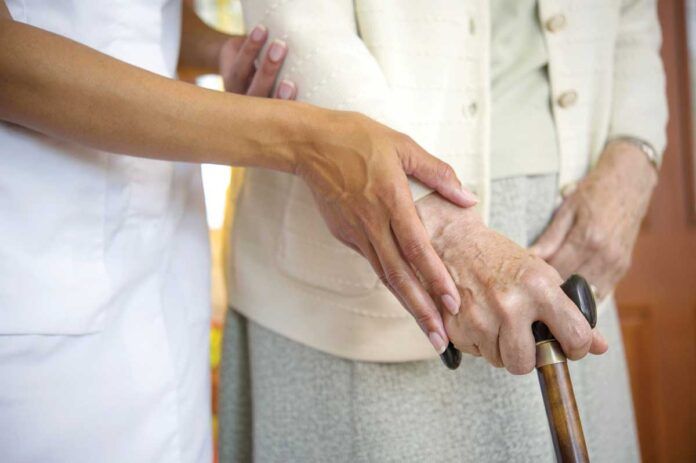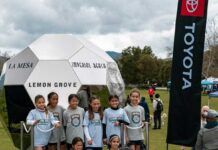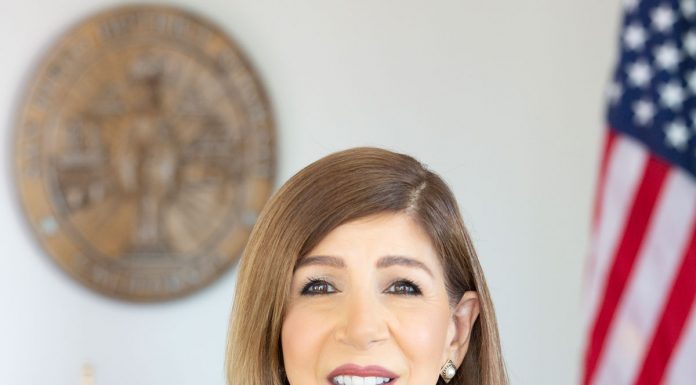On Jan. 30, the County of San Diego Health and Human Services Agency’s Aging & Independent Services and Live Well San Diego was joined by the East County Action Network (ECAN), South County Action Network (SoCAN), North County’s Action Network (NORCAN), and San Diego Community Action Network (SanDi-CAN) for an in-person/virtual All-CAN meeting on discussing the needs of the county’s ever-growing population of seniors. Brought in for her advocacy in geriatric care was County of San Diego Health and Human Services Agency Chief Geriatric Officer Dr. Lindsey Yourman, MD. The audience were members of the CAN networks in San Diego County, organizations and individuals that specialize in eldercare, and many just interested in finding out more about eldercare.
Yourman said the older adult population in San Diego County has grown from 506,768 in 2010 and is expected to be at 910,137 by 2030. She said by 2034, the over 65 population will be larger than the under 18-years-old population for the first time in our nation’s history. She said it is her goal to deal with the inequities in the elder population when it comes to medical care and lifestyle.
Yourman said she is working with partners from the medical and social sectors in bringing these facts to everyone so that in combination, they can all work together in bringing together a Vision Elderhood.
“In elderhood, all of us will feel engaged, valued and empowered to age how and where we choose regardless of race, ethnicity, income, sexuality, ability, and more,” she said. “People will see the last phase of life as no different than the first. Decades long, hugely varied, with diversity and substages. Unique needs and strengths where healthcare and equity initiatives consider kids and adults. We must also consider our elders. If everything we do is great for an 8-year-old and an 80-year-old, then it will be better for all people.”
Yourman said Health and Human Services has already created an Aging Roadmap with 10 focus areas. Housing, transportation, health and community support, medical and social services system, social participation, preparedness, dementia, caregiver support, silver economy, and safety. Its Master Plan for Aging has five focused areas. Housing for all stages and ages, health re-imagined, inclusion and equity, not isolation, caregiving that works, and affordable aging.
Yourman said a geriatrician is like a pediatrician for older adults, and that there are not many geriatrician physicians. She said it is your general internist, with a general fellowship in geriatrics where you do training across a continuum of care, primary care, skilled nursing facilities, to hospital.
“We tend to have a holistic approach,” she said. “I think all medicine ideally would have that. Someone takes care of the heart. Someone takes care of the lungs. Someone takes care of the kidneys. But a geriatrician tries to remind everybody that is all attached to the same person.”
Yourman said function is a word commonly used, because this tends to be what many older people bring up as a concern.
“We all hope for a community where we can have a great quality of life regardless of late-life disability, regardless of changes in cognition,” she said. “People’s values should not be reduced to their functions. Basic activities of everyday living are what we all do every day. We get up out of bed and head for the toilet. We take care of our hygiene and eating. Then we have our instrumental activities of daily living. I think of stuff we do on the weekend, such as shopping, cooking, finances, telephone calls, those kinds of things. Then enhanced activities of daily living. That would be like things you do for enjoyment.”
Yourman said what we need is stories to get a vision of what an age friendly community look like and really lean into those stories.
“I talk a lot about needs and suffering,” she said. “But what does good look like? What does great look like for our community.? We are really seeing an unprecedented shift in our demographic and that is something that we can all leverage as we advocate for the things we have wanted for so long.”
Yourman said the largest needs from a public health standpoint is at the national policy level, but the medical, healthcare, and social organizations need to come together and learn to advocate at the county and state level.
“Medicare does not cover social determinants of health for elderly people,” she said.
“MediCal does if you are a certain percentage below the medium poverty level. Many people do not realize that and may not plan for that. Medicare does not cover memory care, assisted living, or personal acts of daily living. We cannot have Medicare paying a lot of money on drugs that do not work that well if we are not meeting basic needs first. It is a real equity problem. It is a recipe for elderly abuse, and I am concerned about that and people living in poverty are going to be at the highest risks, and their families will be at the highest risks for perpetration.”
Yourman said one of the biggest problems in age friendly communities is loneliness and isolation.
“Something that we can leverage is that loneliness has been declared as a national emergency,” she said. “You can use that and refer to that to gain credibility to whomever you are talking to. Talk about the factors that lead to that. Then we have the evidence of the practice gap in healthcare for older adults.”
Yourman said a 2016 study from the American Medical Association cited only 30% of evidence of based practices for older adults are implemented.
“Why would that be in medicine? Many of the things that we have found to work are non-pharmacologic, interprofessional, not just doctors, but nurses, social workers, speech language, pathologists, recreational therapy, all those things that require a team-based approach. It is often low-tech, high touch, so not as much money in it. Now that we are looking into more value-based care, I think things will change,” she said. “We are going to see health systems more and more interested in how we can do a better job for people just through doing what is right. And it will actually save us money. It does not have to be about spending more money. We must rethink how we are approaching care.”
Yourman said the vision she is trying to promote is that in elderhood, everyone will feel engaged, valued, empowered to age how and where we choose.
Yourman said she has been talking to as many people and organizations in the community as she could, and based the main issues the elderly face or are concerned about is housing insecurity.
“About 70% said that was their major concern. The second is caregiver shortages. Third was loneliness which was heard throughout all the conversations,” she said.
Yourman said one thing they are working on with the Office of Business Intelligence is trying to create a map, a decision tree, depending on individual needs, what resources are available, what programs would work best for one person, and that the county needs feedback on that.
“Social workers were like if everything is at capacity, how helpful will that be if the waiting list is six months for this perfect resource? I think with that map we will be better able to highlight those gaps at the county and state level for. If we can quantify those gaps and show exactly where they are, logically, I think we can achieve some policy change. That is my hope,” she said. “I hope we can grow a forum that is bidirectional in communication in terms of hospitals and health systems being willing to hear our feedback, and feedback from community-based organizations.”















